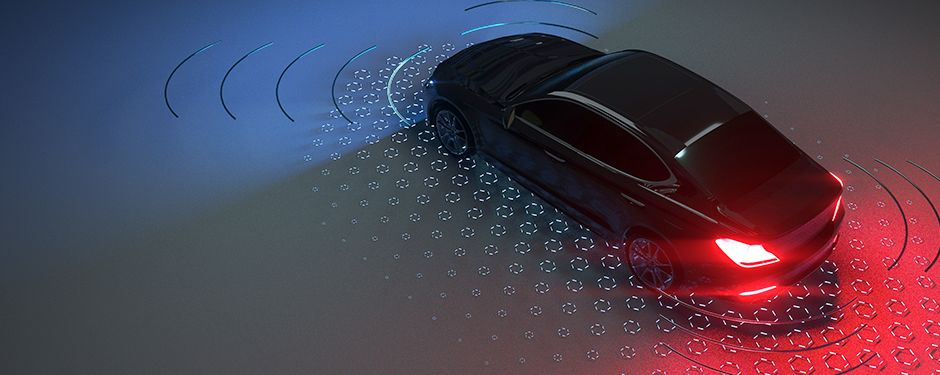DuPont Solutions Are Enabling Next-Gen Automotive Electronics and Electrified Powertrain Component Innovations
October 19, 2022
?fmt=png-alpha)
By Greg Randisi, Global Marketing and Business Development Leader - Automotive and Specialty Industries, DuPont Electronics & Industrial

C.A.S.E. (Connectivity, Autonomous, Sharing/Subscription, Electrification) trends have only begun transforming the automotive industry. Even more significant changes are coming to the market that will continue to revolutionize this sector. Specifically, electrical architecture changes will affect the vehicle’s modules, as well as the electrified powertrain for electric vehicles. Let’s look at these changes, their implication for the industry, and the vital role played by the wide range of solutions offered by DuPont.
Within the electrical system of the vehicle, the industry is moving from a Distributed Electrical/Electronic (E/E) Architecture to a Centralized E/E Architecture. This approach combines many separate functional controllers into centralized high-compute domain controllers and zonal controllers. These new high-compute and domain controllers require advanced designs and materials solutions to address the performance challenges. Some of the challenges include miniaturization for optimized packaging, higher data rates and throughput, and innovative interconnects; all of which need materials like Interra® embedded planar capacitor laminates and Pyralux® flexible copper clad laminates to support next generation designs.
Additionally, Pyralux® flexible copper clad laminate is also enabling solutions that deliver robust temperature stability and automotive grade reliability needed for applications, for example, in power modules. Our latest news release discusses how DuPont Pyralux® AP double sided copper clad laminate enables reliable performance of Semikron-Danfoss eMPack® modules that are set to drive next-gen electric vehicles.
Packaging is becoming a premium in these new designs. When you reduce the footprint of the module while increasing its content, signal integrity challenges are encountered due to electro-magnetic interference (EMI) and thermal issues. Heat dissipation and thermal management are easier in a larger module, but much harder when multiple modules are integrated together in a small space. Similarly, as circuit boards, chipsets, and connectors become smaller and more dense, EMI increases due to coupling of electric and magnetic fields in close proximity to one another. DuPont works with customers to provide thermal gap pads and connector shielding components that can solve difficult design challenges found in next generation electronics.
As the automotive industry strives to achieve consumer expectations for faster charging, safety and increased battery range, DuPont materials are at the forefront of enabling these innovations.
Automotive companies continue to look for solutions that deliver longer life batteries and increased power density. Both these features are key to address range anxiety and the expectation of EV users to charge their vehicle as fast as filling a gas tank. eMotors are transitioning to increased voltages (400V -> 800V+) to accommodate this demand for faster charging and greater power density. Our Kapton® wire insulation and Nomex®/Kapton® slot liner materials are designed for the purpose of providing thermal integrity and electrical stability. They also offer design flexibility to help meet optimized size and system design requirements. Our new wire insulation solutions enable next generation eMotor designs that are supporting higher voltages (800V+). To this end, we recently co-presented with Polestar an IEEE webinar titled “Advanced Insulation and Wire Wrap Systems for 800V+ Next Gen eMotors.” To access the webinar, please go to this link.
We are excited to work with automotive design engineers tackling the next generation electrified powertrains as it allows us to translate our experience across multiple industries and field-proven results in even the most challenging conditions. For example, in the aerospace field, where extreme temperatures are commonplace and fluctuate greatly, wiring needs to survive for a very long time. In the rail industry, high-traction motors have long life expectancies, and our materials have been enabling this achievement for 30-plus years. Thus, we can bring our knowledge from other mobility-related industries into vehicle motor designs, as well as other powertrain components to increase reliability, range, and system performance.
Thermal runaway in batteries is a significant challenge that requires innovative solutions. Thermal runaway occurs when the temperature rises to the point that uncontrolled exothermic chemical reactions occur inside the battery, causing more heat to be produced and driving the temperature even higher, causing further chemical reactions and, potentially, resulting in a fire or explosion. When thermal runaway occurs the damage is done in a matter of seconds. If you don't have the right material solutions, it can cause catastrophic damage to a vehicle almost immediately. DuPont is developing materials solutions that can help protect the user and allow them time to exit the vehicle if a battery fire does occur.
DuPont’s materials solutions span a wide range of automotive applications beyond the eMotor, domain controller/zonal modules and battery – from optimizing automated driver assistance systems (ADAS), to protecting power electronics to innovating connectivity, infotainment and battery management systems.
Figure 1 illustrates the many places DuPont Interconnect Solutions (ICS) addresses the challenges in today’s vehicles.

Figure 1. DuPont solutions can address many of today’s vehicle sub-systems
In summary, the DuPont team is continuing to invest in innovation to address the signal integrity and power transmission challenges for the automotive industry, while focusing on sustainability.
In line with DuPont’s corporate ‘Acting on Climate’ commitment, we are continuing to focus on renewable energy, as well as continually considering our circular economy approach. The ICS business segment in 2021 achieved the target of having 95% of global operations powered with renewable energy using renewable energy credits, and we continue to accelerate towards our future sustainability goals.
DuPont is excited to continue delivering advanced solutions to contribute to the fast-paced change of C.A.S.E. technologies. Let’s build a forward-thinking, innovatively designed, electronics-enhanced, electrified future together!
Related Information

DuPont (NYSE:DD) Interconnect Solutions, announced today a multiyear contract with Semikron-Danfoss

Autonomous driving and electrification are transforming mobility for automotive manufacturers.

The automotive industry is in the midst of an exciting transition as it migrates away from cars with gas engines
We’re here to help.
We love to talk about how our electronics solutions can build business, commercialize products,
and solve the challenges of our time.